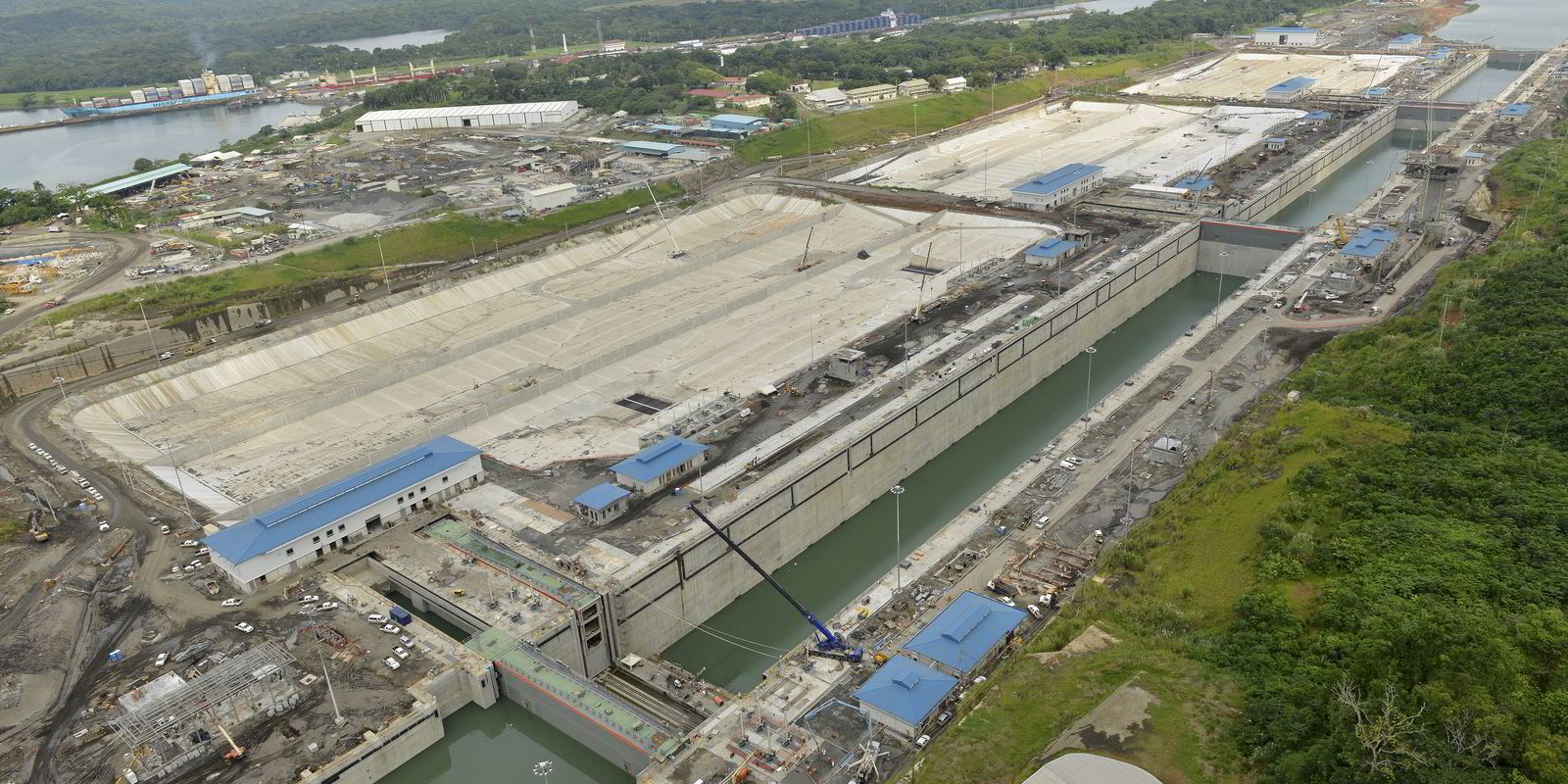A record number of very large gas carriers (VLGCs) delivered in 2016 has pushed freight rates down to their lowest levels in six years. Now shipowners face the question of whether the opening of the new locks on the Panama Canal will force rates down even further.
Previously, only about one-fifth of the world’s VLGC fleet was considered panamax-capable. But the new locks will open the waterway to the entire VLGC fleet. And more charterers are looking to take advantage of that.
Japan’s largest LPG importer, Astomos, booked the first transit for a VLGC, the 78,000-cbm Linden Pride (built 2001), through the new locks, scheduled to open late June. That transit means a 25-day voyage from the US Gulf Coast to Asia compared to the more widely used, 45-day transit around the African cape.
The impact will be felt mostly in VLGCs trading in the western hemisphere market. Those ships, which command freight rates of $2.6m or so for an Asian voyage, face more competition for cargoes due to the quicker turnaround.
Avance Gas estimates the Asian market requires about six VLGCs per million tonnes of LPG exported from the US currently. In comparison, the short hauls to South American or European markets only use between two and three VLGCs per million tonnes of cargo.
Out of an average of 37 VLGCs being sent out of US export terminals, an average of 20 head to Far East destinations. Most of those use the African cape route, while smaller numbers use the current Panama Canal locks or ship-to-ship (STS) transfers.
Avance Gas chief executive Christian Andersen said during the company’s earnings conference call last week that the Panama Canal is a “big question” in the industry now as charterers look for a quick way to bring US LPG to Asian customers.
Market sources say Vitol and Petredec are among charterers enquiring about Panama options on fixtures.
“When charterers are talking about employment further out, they always want to have a Panama option,” Andersen told analysts.
Michael Panas, consulting manager at Poten & Partners, says the impact of the new locks will emerge over the next several months as new rates clear the market. How deep that impact will be depends on how many charterers will be able book slots in the new locks.
The Panama Canal Authority has only authorised four slots, two in each direction, during the initial operation of the new locks. But they are expected to ramp up closer to 10 slots eventually. While freight rates should be lower, charterers will have to weigh a laden toll of $190,000-per-day VLGC transiting the new locks. Charterers could also face dead freight costs if draft restrictions limit how much gas can be loaded into a ship.
Shipowners may have to rely more on slow steaming and or the reposition of ballasting vessels if more transits occur through the new canal locks.
“Charterers are more bullish about the LPG throughput of the Canal but shipowners are more bearish,” Panas said. “The reality is somewhere in between.”
Shipowners hope the growing use of US-sourced LPG in Asia’s petrochemical industry will keep utilisation high on both the Panama Canal and African cape routes. But Panas says expansions in the Far East will face a hard time offsetting lower tonne-mile demand due to shorter hauls.
“The question now is growth above and beyond what is already expected,” Panas said.
But shipowners still remain bullish on the number of cargoes heading from the US to Asia. Although Avance’s Andersen acknowledges that VLGC rates have fallen further than expected this year, with the volumes of LPG going from the US to Asia being above expectations, he says the market may correct in the coming months.
“Our customers might be surprised to see the big number of ships disappearing into long-term employment in the US,” Andersen said.




